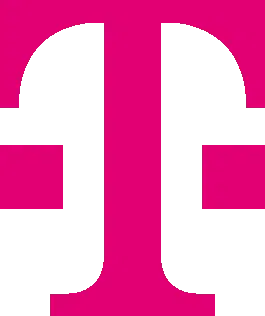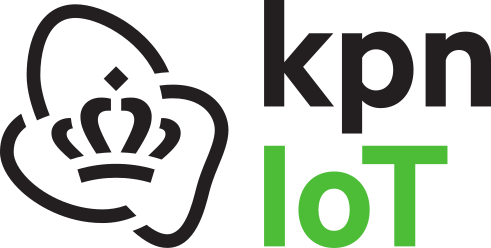SGP.32 and the evolution of eSIM for IoT: What you need to know now
The evolution of the Internet of Things (IoT) depends on reliable, adaptable connectivity. As more connected devices are deployed across sectors like logistics, utilities, healthcare, and infrastructure, the ability to manage eSIMs efficiently becomes a strategic advantage. That’s why GSMA’s SGP.32 standard is gaining attention — it’s built specifically to meet the demands of large-scale, remote IoT deployments.
However, with SGP.02, SGP.22, and now SGP.32 all in circulation, it’s essential to understand their roles and how they fit together. Businesses today must make smart decisions about which standard fits their current needs while preparing for the next phase of IoT growth.

A quick overview of the eSIM standards
GSMA’s Remote SIM Provisioning (RSP) specifications have developed to suit different types of devices and use cases:
- SGP.02 – Originally developed for M2M and industrial IoT deployments, now in maintenance phase.
- SGP.22 – The current consumer standard, widely used for smartphones, tablets, and wearables.
- SGP.32 – A new, purpose-built standard for IoT, designed to replace SGP.02 with a more secure, scalable, and automated architecture.
Rather than serving as a direct replacement for SGP.22, SGP.32 is designed to extend and improve eSIM provisioning specifically for IoT — offering greater autonomy, improved performance in constrained environments, and flexibility at scale.
Why SGP.32 matters for IoT connectivity
SGP.32 introduces significant architectural improvements, enabling remote eSIM profile management across large fleets of IoT devices.
Feature |
Advantage |
| IoT Profile Assistant (IPA) | Located within the SIM or device (IPAe or IPAd), this module securely handles profile management operations. |
|
eSIM IoT Remote Manager (eIM) |
Orchestrates bulk provisioning, updates, and deactivation of profiles from a centralised cloud system. |
|
Lightweight Protocols (CoAP/DTLS, HTTP/TLS) |
Reduce power consumption and data overhead, making them ideal for battery-powered or headless devices. |
|
Vendor-Neutral Design |
Devices can switch between eIMs and profile providers without vendor lock-in. |
|
Support for Asynchronous Workflows |
Enables scheduled operations even when devices are offline or intermittently connected. |
|
Built-In Security Features |
Cryptographic protection, secure rollback mechanisms, and tamper resistance ensure data integrity and resilience. |
SGP.32 is a game-changer for industries deploying connected devices in remote, roaming, or unmanaged environments — exactly the kind of deployments rSIM was built to support.
The role of SGP.22 today
While SGP.32 is gaining traction, SGP.22 remains widely used, particularly in the consumer device landscape. It offers:
- Limited remote eSIM profile control for businesses and users.
- Carrier switching flexibility.
- Proven integration across a wide range of commercial devices.
Importantly, SGP.32 is not yet commercially available at scale. Although the GSMA finalised version 1.2 in mid-2024, mainstream adoption is expected to begin in late 2025. Until then, most enterprises will continue to depend on SGP.22 — with future planning in mind.
When should you use SGP.32?
The new standard unlocks benefits across a range of use cases. Here are just a few examples:
Use Case |
How SGP.32 Helps |
| Cross-Border Asset Tracking | Devices automatically connect to local networks without manual provisioning. |
| Remote Sensor Networks | OTA updates eliminate the need for site visits or manual SIM swaps. |
| Fleet & Vehicle Connectivity | Centralised control of carrier profiles, regardless of region. |
| Healthcare & Telecare Devices | Built-in rollback features ensure uninterrupted service, even after failed updates. |
Our commitment: Helping you navigate what’s now and what’s next
At rSIM, we understand that businesses need reliable solutions now, not just in the future. That’s why we provide:
✅ SGP.02 support for mission-critical M2M and infrastructure applications.
✅ SGP.22 enablement to deliver scalable, remote-controlled eSIM management.
✅ A GSMA-compliant roadmap that ensures a smooth path to adopting SGP.32 when it’s commercially ready.
Our mission is to help you take full control of your IoT connectivity, using standards that work today and are built to evolve with your needs.
Final thoughts
SGP.32 marks a major leap forward in eSIM management for IoT. It introduces a flexible, secure, and scalable framework that directly addresses the limitations of legacy provisioning systems like SGP.02. Meanwhile, SGP.22 continues to serve the consumer eSIM space, and will likely coexist for the foreseeable future.
At rSIM, we help businesses navigate both the current state and the road ahead. Whether you’re operating large-scale IoT deployments today or planning for a smarter, standards-driven future, we make sure your connectivity solution is resilient now and ready for what’s next.
Ready to prepare for SGP.32?
Let’s talk. Whether you’re rolling out IoT devices today or preparing for what’s next, our team can help you make informed, future-proof decisions.





